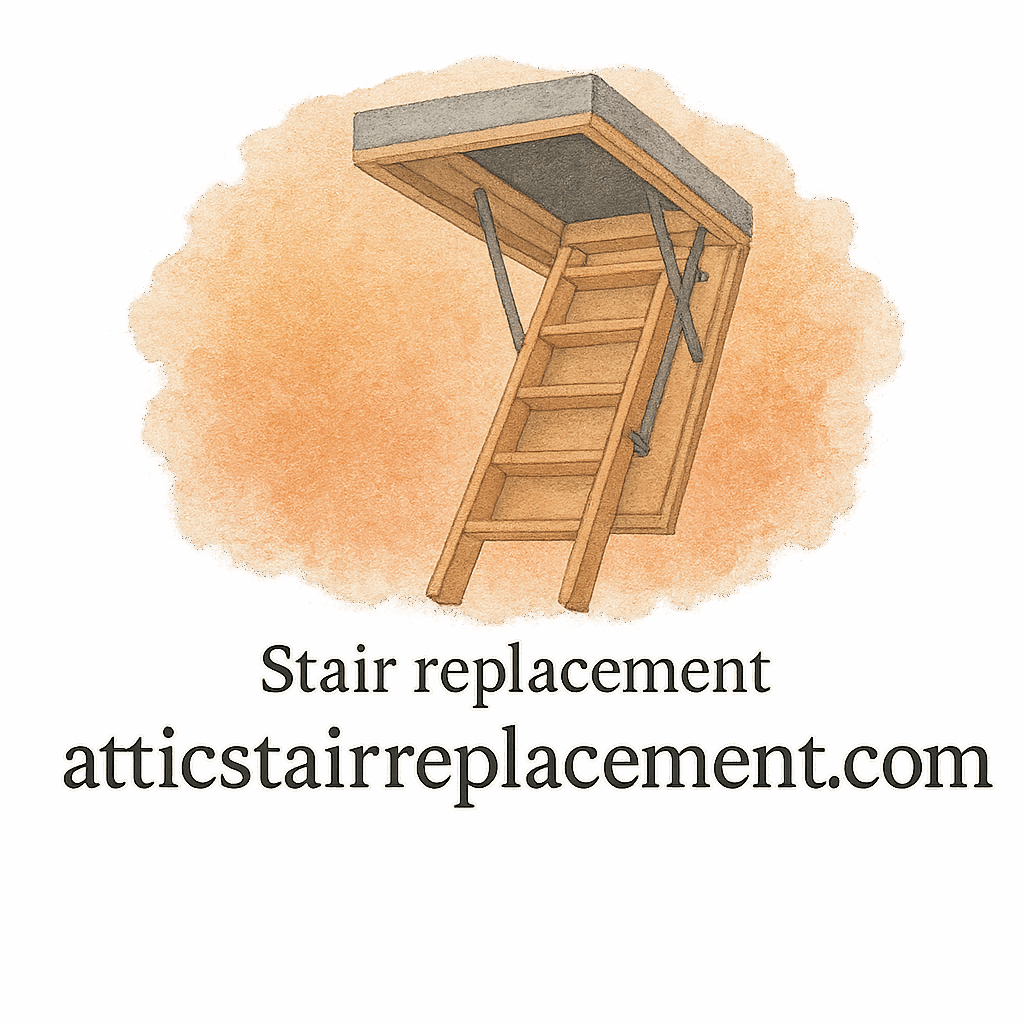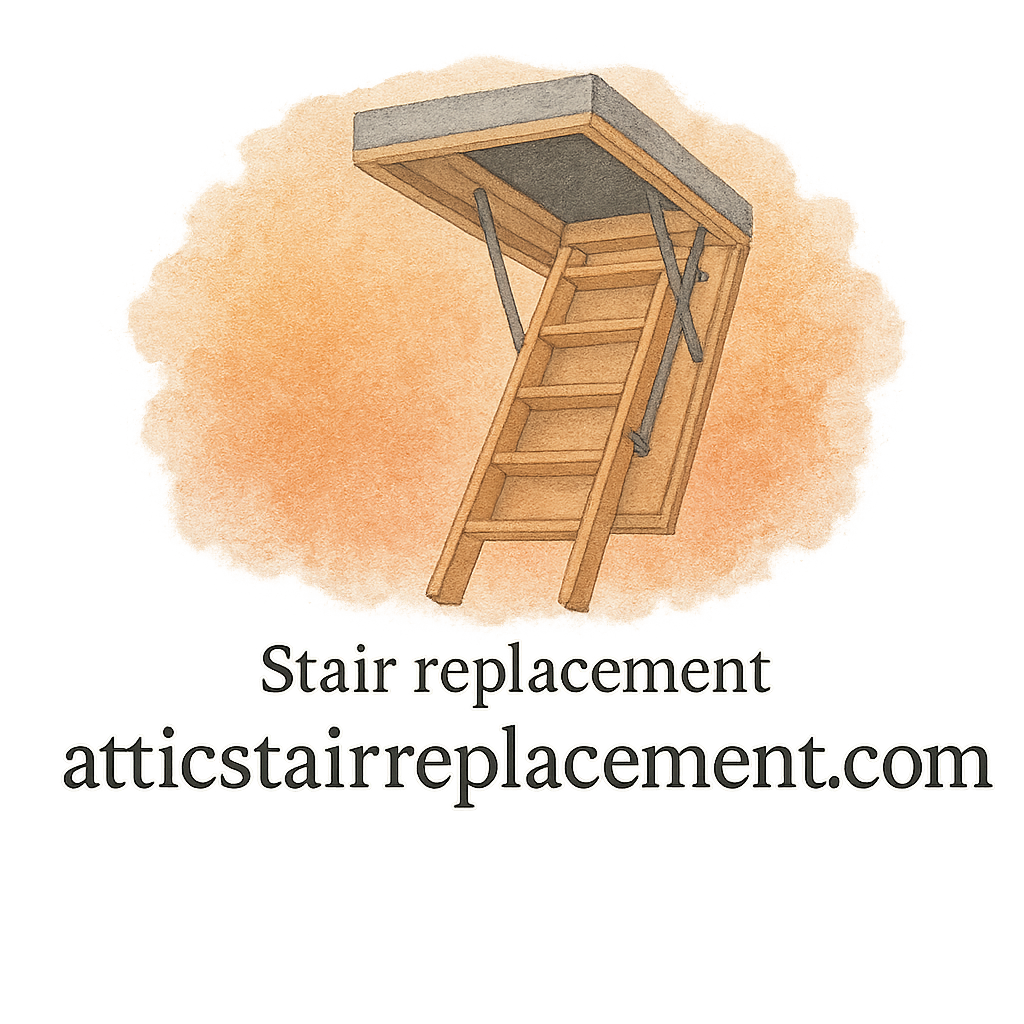If you’ve ever tiptoed up your attic stairs and heard them creak like they’re complaining, you might be ignoring signs that it’s time for a change. Your attic stairs aren’t just a means to get to the hidden treasures (or clutter) in your attic—they’re a critical part of your home’s safety and functionality. So let’s dive into 9 ways to spot early signs of attic stair replacement needs before a small problem becomes a dangerous situation.
Why Attic Stair Maintenance Is Crucial
Safety and Accessibility Considerations
Your attic stairs take more wear and tear than you think. Whether you’re storing holiday decorations or using your attic as a home office, reliable access is key. Weak, worn-out stairs can cause serious accidents.
Hidden Costs of Neglected Attic Stairs
If you’re ignoring early warning signs, you’re probably stacking up on repair costs. Small issues snowball into bigger ones that often cost more to fix than a total attic stair replacement.
1. Creaking or Squeaking Sounds
What Those Noises Really Mean
Sure, older wood can creak a bit, but if every step you take sounds like a haunted house, it’s probably not just age—it could be loose joints or weakened wood.
When to Investigate Further
Frequent noises that get louder over time are clear indicators it’s time to assess your attic stairs. Head to the DIY installation guide to know what’s involved in fixing or replacing them.
2. Visible Cracks or Splits in the Wood
Structural Integrity Warning Signs
Cracks in your attic stair wood aren’t just cosmetic—they could mean the material is failing. This compromises the structural integrity of the staircase.
How to Perform a Visual Inspection
Shine a flashlight along the sides of the stairs and check for fractures. If you spot any, it might be time to browse some product reviews for sturdier replacements.
3. Loose or Wobbly Steps
Dangers of Unstable Steps
If you feel a step shift beneath your foot—yikes! That’s a fall waiting to happen. Loose steps can be a sign of failing attachments or old hardware.
Quick Fix or Total Replacement?
A screw here and there might do the trick short-term, but for long-term safety, expert advice is recommended.

4. Rusty Hinges or Metal Parts
Impact on Functionality
Rust doesn’t just look ugly—it weakens metal. If hinges or bolts are rusted, the stairs may not deploy correctly.
DIY Maintenance Tips
You can apply anti-rust spray and lubricants regularly, but if the rust has spread too far, replacing your stairs might be the smarter choice.
5. Difficulty Opening or Closing the Ladder
Hardware Malfunctions
Struggling to pull down or stow away your attic stairs? That’s often due to faulty springs or worn-out tracks.
When It Becomes a Safety Risk
You don’t want the ladder to collapse mid-use. Consider a heavy-duty model that’s easier to operate and more reliable.
6. Sagging or Warped Wood Panels
Effects of Humidity and Temperature
Attic conditions fluctuate wildly, and wood absorbs moisture like a sponge. Warping can lead to misalignment and instability.
Prevention and Repair Options
Regularly checking for sagging panels and addressing attic ventilation can prevent this. Still, badly warped stairs are better off replaced.
7. Outdated Design and Materials
Modern Alternatives Are Safer and Stronger
Old stairs made from subpar materials don’t hold up like modern models. Today’s designs prioritize both aesthetics and durability.
Time for a Stylish Upgrade
Modern stairs can fit seamlessly into your ceiling, offering a clean look and improved safety. Check our remodel tips for inspiration.
8. Visible Mold or Water Damage
How Moisture Harms Attic Stairs
Water is the enemy of wood. Mold and mildew can eat away at its strength and compromise safety.
Warning Signs That Warrant Replacement
Discoloration, a musty odor, or softness in the wood are clear indicators. Visit our maintenance & repair section for steps to take.
9. Recurring Repairs and Patch Jobs
When It’s More Cost-Effective to Replace
If you’re constantly fixing screws, steps, or hardware, it may be more budget-friendly to opt for a full attic stair replacement.
Knowing the Breaking Point
Frequent repairs signal that your stairs have passed their prime. Check out our tagged guides on advice and budget, contractor, and job quality.
Expert Tips for Attic Stair Replacement
Hire a Contractor vs. DIY
If you’re handy, DIY projects can save money. But hiring a pro ensures code compliance and better results.
Budgeting and Planning Ahead
Use our home improvement section to set your expectations and avoid hidden costs.
How to Choose the Best Attic Stair Replacement
Material Durability
Aluminum and steel offer longevity, while wood brings a traditional look. Choose what fits your space and usage.
Size and Weight Capacity
Make sure your new stairs support enough weight and fit properly. Consider expert suggestions when selecting a model.
DIY vs. Professional Installation: What You Should Know
Pros and Cons of Each Approach
DIY can be satisfying and cheaper, but it takes time. Professionals offer faster, safer, more reliable installs.
Mistakes to Avoid
Wrong measurements, weak anchors, or poor alignment are common DIY issues. Learn from our installation tag.
Maintenance Tips to Extend Attic Stair Lifespan
Seasonal Inspection Checklist
Look for cracks, rust, and loose hardware quarterly. This habit will save you from big repairs.
Lubrication and Tightening Screws
Use silicone spray and a screwdriver regularly to keep your stairs functional. Tips are available on our care tag.
Why Ignoring the Signs Can Be Dangerous
Safety First
A fall from faulty stairs isn’t just painful—it’s potentially life-altering. Protect your family by staying proactive.
Costly Damages and Liability
Delayed replacements can damage insulation, ceilings, and even increase your liability risk as a homeowner.
Conclusion
Spotting early signs of attic stair replacement needs can save you money, stress, and injury. From squeaky steps to water damage, every sign is your stairway screaming for help. Don’t wait for an accident to act—regular checks and timely upgrades are your best bet. Whether you go DIY or hire a contractor, make informed decisions using our expert guides.
FAQs
1. How long do attic stairs typically last?
With good maintenance, attic stairs can last 10-15 years. Poor conditions or heavy use may shorten that lifespan.
2. Can I replace attic stairs myself?
Yes, especially if you’re experienced with home improvement. For guidance, visit our DIY installation section.
3. What type of attic stairs are the most durable?
Metal models like aluminum or steel are extremely durable. Check our product reviews to compare.
4. Is it safe to use attic stairs with a cracked step?
No, it’s a serious hazard. Stop using them and consider immediate replacement.
5. How much does attic stair replacement cost?
It varies by model and installation method. Use our budget tag to estimate costs.
6. Can attic stairs be installed in any ceiling?
Most ceilings can accommodate them, but structural framing matters. See our expert advice.
7. What’s the best way to maintain attic stairs?
Routine inspections, cleaning, lubrication, and keeping an eye on alignment. Explore our maintenance tips.


